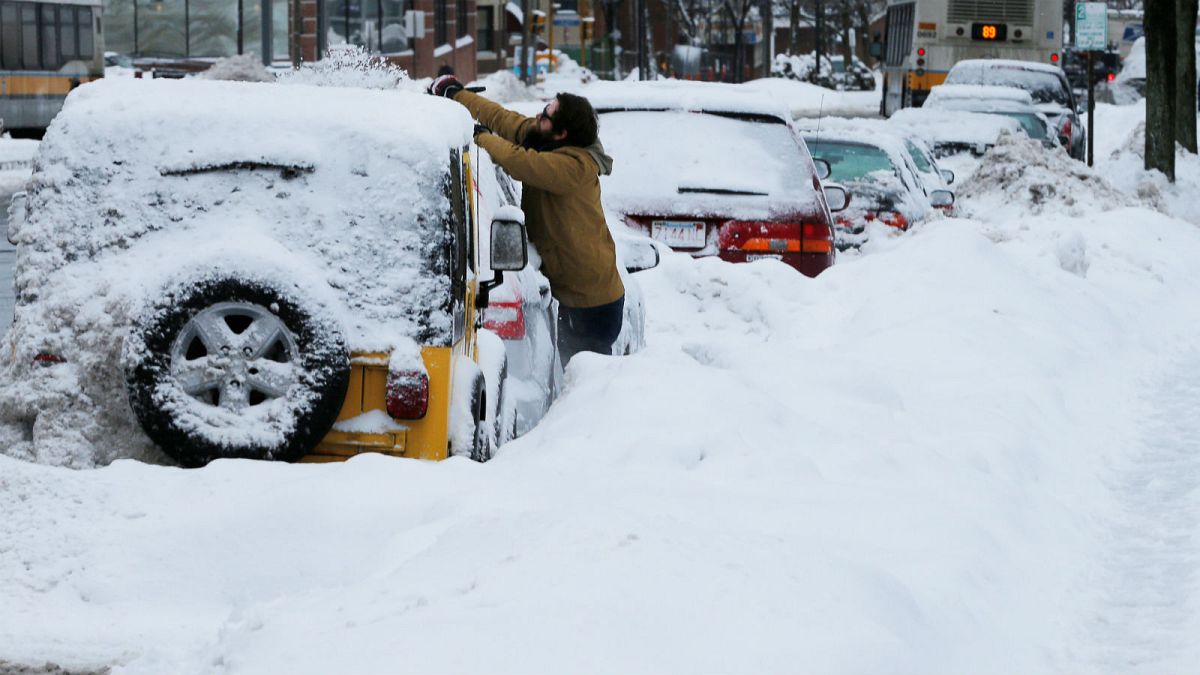The weather phenomenon involves a rapid drop of pressure within a 24-hour period and brings blizzard conditions with heavy winds and waves.
As millions of Americans brace themselves for sub-zero temperatures on Thursday (January 4), forecasters are using the terms "bomb cyclone" and "bombogenesis" to describe the impending storm.
But what exactly does "bombogenesis" and "bomb cyclone" refer to?
The weather phenomenon is used to describe a storm projected to undergo rapid strengthening.
The effect, which was first described by Massachusetts Institute of Technology Professor and storm forecaster Fred Sanders, occurs when there’s a rapid drop in pressure, which greatly strengthens the storm.
According to the National Ocean Service. a bombogenesis forms when "cold air mass collides with a warm air mass". The formation of this weather phenomenon is called "bombogenesis" and the resulting storm is known as a "bomb cyclone".
American meteorologist Ryan Maue explained in a blog post that the "bombing" effect happens when there is a rapid decrease or drop in surface barometric pressure of at least 24 millibars in 24 hours.
Maue also said that a bomb cyclone shares several characteristics with tropical storms such as hurricane force winds.
The private weather site Accuweather characterized bombogenesis as one of the “most violent weather systems to affect a broad area” since the winds produced by the storm often cause great damage to its surroundings.
So what is expected to happen in the next 48 hours?
The National Weather Service (NWS) tweeted that heavy snow and strong winds would "impact" the entire East Coast through Friday. Blizzard warnings were put into effect from Virginia to Maine.
The NWS warned that some areas might see "downed trees, power outages, and coastal flooding" due to the strong winds and waves.
Bombogenesis of the past
The eastern coast has experienced bombogenesis in the past, like the Superstorm of 1993, which is best known for a snowfall that covered parts of Alabama and went all the way to Maine. The NWS ranked it as "among the deadliest and most costly weather events of the 20th Century".
